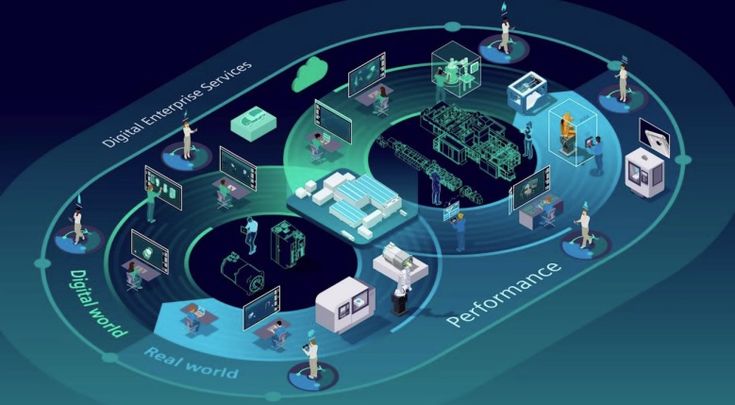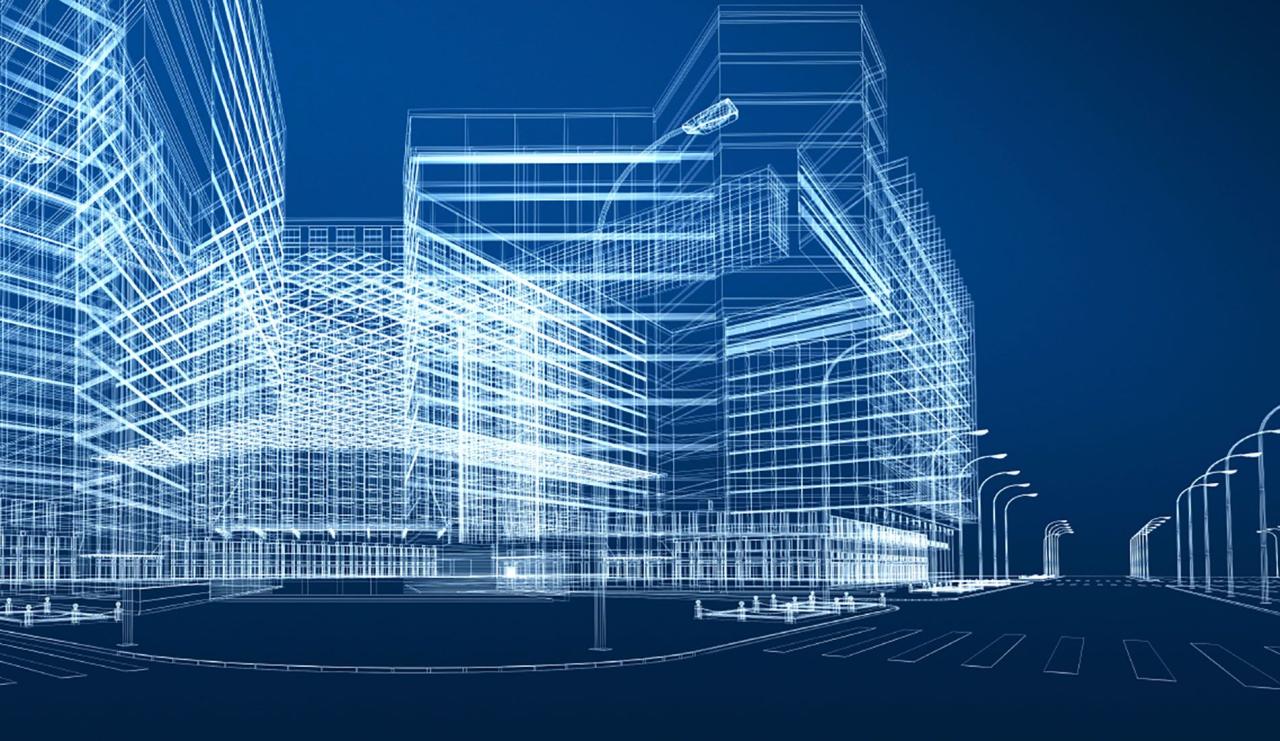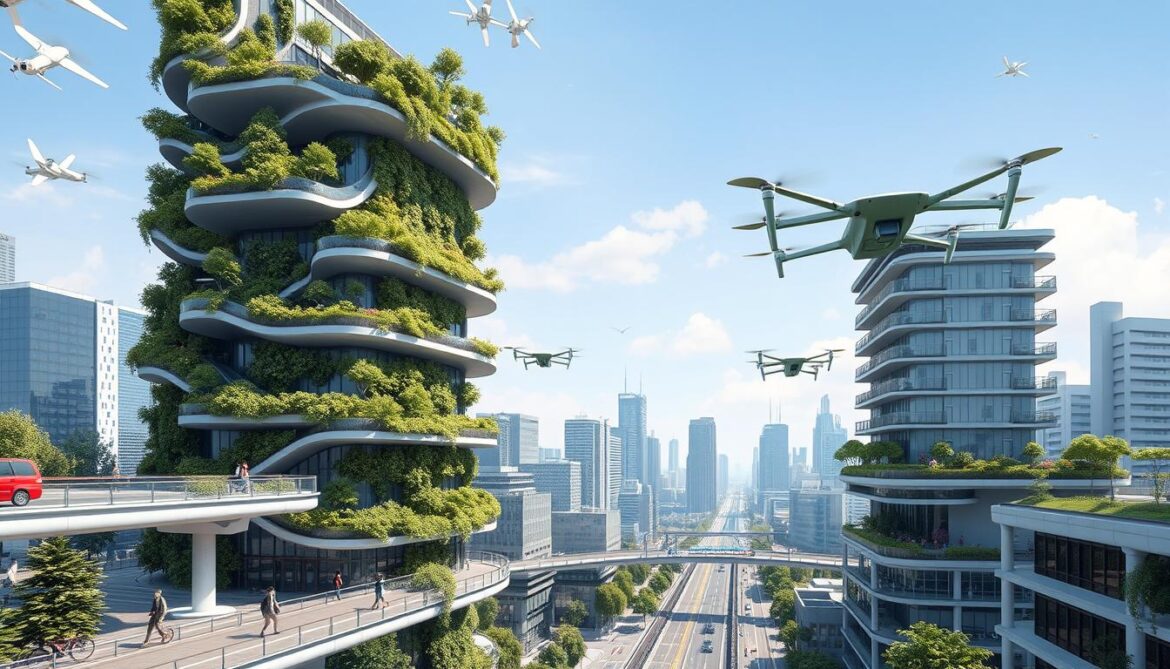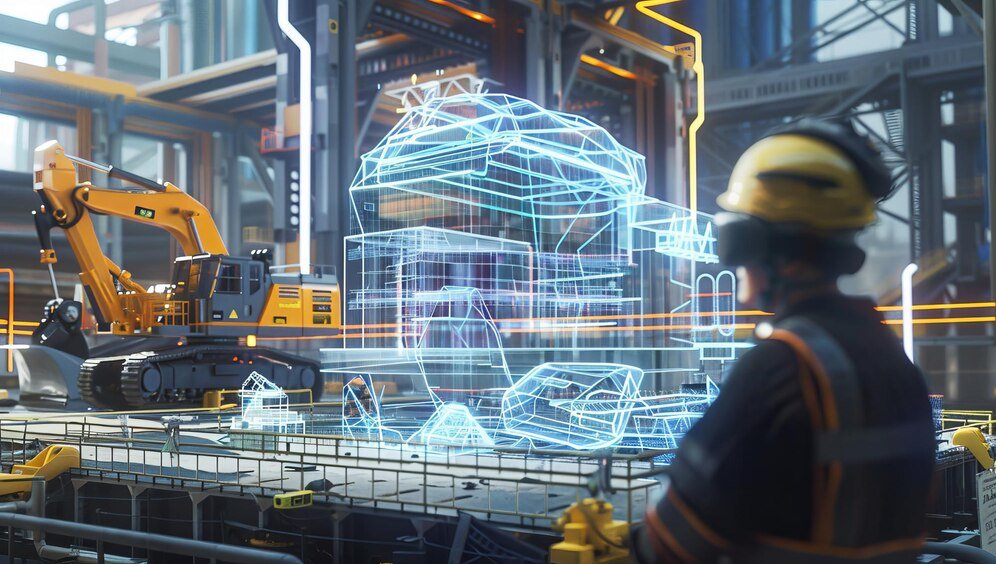The burgeoning field of digital transformation is constantly seeking innovative ways to bridge the gap between the physical and digital realms, driving efficiency, optimizing performance, and enabling proactive decision-making. At the forefront of this convergence is the concept of Digital Twins, a revolutionary technology that creates virtual replicas of physical assets, processes, or even entire systems. Far more than a mere 3D model, a digital twin is a dynamic, living counterpart that receives real-time data from its physical twin, allowing for continuous monitoring, simulation, analysis, and optimization. This powerful synergy unlocks unprecedented insights, enabling predictive maintenance, performance enhancement, and the ability to simulate complex scenarios without impacting physical operations. In essence, digital twins are the ultimate blueprint for simulating and mastering our built worlds.
The Evolution of Replication: From Models to Living Twins
To fully appreciate the profound impact and sophisticated nature of Digital Twins, it’s crucial to understand their evolution from simpler forms of virtual representation.
A. Traditional Models: Static Representations
Historically, human efforts to represent physical objects in the digital sphere have evolved through several stages, each with increasing fidelity and functionality.
- 2D Drawings and Schematics: The most basic forms of digital representation, often flat images or technical diagrams, provided foundational information about an object’s structure and components. While essential for initial design, they lacked depth, interactivity, and real-world data integration.
- 3D Models and CAD (Computer-Aided Design): With the advent of CAD software, engineers and designers could create three-dimensional virtual models. These models offered a far richer understanding of an object’s geometry, spatial relationships, and aesthetic design. They revolutionized product development and architectural planning, enabling virtual prototyping and visualization. However, these models were largely static – they represented an object at a specific point in time and did not reflect its real-time operational status.
- Simulation Software: Engineers also developed specialized simulation software to analyze how physical systems might behave under various conditions (e.g., fluid dynamics, stress analysis). These simulations were powerful for testing hypothetical scenarios, but they operated on predefined parameters and typically weren’t connected to the real-time performance of an actual, deployed asset. They provided “what if” scenarios based on theoretical models.
These traditional methods, while valuable, represented a ‘snapshot’ in time or a theoretical projection. They lacked the dynamic, continuous, and bidirectional data flow that defines a true digital twin.
B. The Birth of the Digital Twin: A Dynamic Counterpart
The concept of the Digital Twin, first articulated by Dr. Michael Grieves in 2002, gained prominence with the rise of the Internet of Things (IoT), advanced analytics, and cloud computing. It represents a paradigm shift where the virtual model is no longer static but a living, breathing counterpart to its physical twin.
- Real-time Data Integration: The defining characteristic of a digital twin is its continuous, real-time connection to its physical counterpart. Sensors embedded in the physical asset collect vast amounts of operational data (temperature, pressure, vibration, energy consumption, location, etc.) and transmit it to the digital twin in the virtual space.
- Bidirectional Information Flow (Often): While real-time data from physical to digital is foundational, advanced digital twins often enable a bidirectional flow. Insights gained from the digital twin (e.g., optimized settings, predictive maintenance alerts) can be sent back to control or adjust the physical asset, creating a closed-loop system for continuous improvement.
- Comprehensive Lifecycle Representation: A digital twin often encompasses more than just the current operational state. It includes design specifications, manufacturing data, historical performance logs, maintenance records, and even predicted future states. This holistic view provides a complete lifecycle representation of the physical asset.
- Simulation and Prediction Capabilities: Equipped with real-time data and historical context, the digital twin can run sophisticated simulations. It can predict future performance, identify potential failures before they occur (predictive maintenance), test the impact of operational changes, and optimize complex processes without risking the physical system.
This dynamic, data-rich, and interactive nature transforms the digital representation from a passive model into an active, intelligent, and highly valuable operational asset.
Core Components and Architecture of a Digital Twin
A fully functional Digital Twin system is a sophisticated ecosystem comprising several interconnected components, working in concert to create the virtual replica and derive actionable insights.
A. The Physical Asset (Twin)
This is the tangible object, process, or system that is being replicated. It could be anything from a single pump, a manufacturing robot, an entire factory floor, a smart building, a vehicle, or even a city’s infrastructure. The physical asset is equipped with the means to generate data.
- Sensors: These are the eyes and ears of the digital twin. They collect various types of data from the physical asset, such as temperature, pressure, humidity, vibration, flow rates, energy consumption, GPS location, and operational status. The quality and density of sensor data directly impact the fidelity and usefulness of the digital twin.
- Actuators (for Bi-Directional Twins): In more advanced digital twin implementations, actuators allow commands or optimized settings from the digital twin to be sent back and applied to the physical asset, enabling remote control or automated adjustments for performance optimization or corrective actions.
- Connectivity: Reliable communication protocols and networks (e.g., Wi-Fi, 5G, LoRaWAN, Ethernet, industrial protocols like Modbus, OPC UA) are essential for transmitting real-time sensor data from the physical asset to the digital platform.
B. The Digital Twin Platform
This is the virtual environment where the digital replica resides and where all the processing and analysis occur. It typically resides in a cloud computing environment due to the computational demands and data storage requirements.
- Data Ingestion and Integration Layer: This component is responsible for collecting, filtering, cleaning, and ingesting raw sensor data from the physical asset. It integrates data from various sources, including IoT devices, enterprise resource planning (ERP) systems, manufacturing execution systems (MES), and customer relationship management (CRM) systems.
- Data Storage and Management: A robust data infrastructure is required to store vast amounts of historical and real-time data. This often involves a combination of time-series databases for sensor data, relational databases for structured information, and data lakes for large volumes of unstructured data.
- Digital Model Creation and Management: This is the core of the digital twin – the virtual representation itself. It includes:
- Geometric Models: 3D CAD models, building information models (BIM).
- Physics-Based Models: Simulations that incorporate laws of physics to predict behavior (e.g., thermal models, fluid dynamics).
- Behavioral Models: Logic and algorithms that define how the asset operates under different conditions.
- Rule Engines: For defining operational rules and alerting thresholds.
- Analytics and Simulation Engine: This powerful component processes the ingested data, applies advanced analytics, and runs simulations. It leverages:
- Machine Learning (ML) Models: For predictive analytics (e.g., predicting equipment failure), anomaly detection, and optimization algorithms.
- Artificial Intelligence (AI): For pattern recognition, intelligent decision support, and autonomous control recommendations.
- Simulation Software: For running ‘what-if’ scenarios, testing operational changes, and optimizing performance parameters.
- User Interface (UI) and Visualization: This layer provides intuitive dashboards, 3D visualizations, augmented reality (AR) or virtual reality (VR) interfaces that allow users to interact with the digital twin, monitor its status, analyze data, and receive insights. It translates complex data into actionable information.
C. Human Interaction and Feedback Loop
While highly automated, human interaction remains critical. Operators, engineers, and managers use the digital twin to gain insights, make informed decisions, and often provide feedback to refine the twin’s models or implement changes in the physical world. This creates a continuous improvement cycle.
Unlocking the Strategic Advantages of Digital Twins
The adoption of Digital Twins offers a compelling array of benefits that directly address critical operational challenges and drive significant strategic value for businesses across diverse sectors.
A. Enhanced Operational Efficiency and Optimization
Digital Twins provide an unparalleled level of insight into asset and process performance, leading to dramatic improvements in operational efficiency and optimization.
- Real-time Performance Monitoring: By continuously monitoring real-time data from physical assets, organizations can identify performance deviations, bottlenecks, and inefficiencies as they occur, enabling immediate corrective action.
- Energy Consumption Optimization: For buildings and industrial equipment, digital twins can simulate and analyze energy usage patterns, identify waste, and recommend optimal settings for heating, ventilation, air conditioning (HVAC), lighting, and machinery operation, leading to significant energy cost savings.
- Process Streamlining: In manufacturing or logistics, digital twins can model entire production lines or supply chains, identify choke points, optimize resource allocation, and simulate different workflow scenarios to improve throughput and reduce cycle times.
B. Predictive Maintenance and Reduced Downtime
One of the most transformative applications of Digital Twins is in predictive maintenance, moving beyond reactive or even preventive approaches.
- Early Failure Detection: By continuously analyzing sensor data (e.g., vibration, temperature, pressure), the digital twin’s AI/ML models can detect subtle anomalies that indicate impending equipment failure long before it happens.
- Optimized Maintenance Schedules: Instead of performing maintenance based on fixed schedules (which can be too early or too late), digital twins enable condition-based maintenance, scheduling interventions only when truly necessary, minimizing downtime and extending asset lifespan.
- Reduced Unplanned Outages: Proactive identification of potential issues significantly reduces the incidence of unexpected equipment breakdowns, preventing costly production halts, service disruptions, and safety hazards.
C. Improved Product Design and Innovation
Digital Twins bridge the gap between design, manufacturing, and operation, providing invaluable feedback for improved product design and fostering continuous innovation.
- Virtual Prototyping and Testing: Designers can create digital twins of new product prototypes and simulate their performance under various real-world conditions before any physical manufacturing begins. This accelerates the design cycle, reduces the need for expensive physical prototypes, and allows for rapid iteration.
- Real-world Feedback for Design: By analyzing the performance of digital twins of deployed products, manufacturers gain deep insights into how their products behave in actual use. This real-world feedback can be directly incorporated into subsequent design iterations, leading to more robust, efficient, and user-friendly products.
- Faster Time-to-Market: The ability to simulate and optimize designs virtually, coupled with predictive insights from existing products, significantly shortens the design and development cycle, leading to faster time-to-market for new or improved products.
D. Enhanced Risk Management and Safety
Digital Twins play a crucial role in improving risk management and enhancing safety across various industries.
- Hazard Simulation: Complex or dangerous scenarios (e.g., equipment failure, natural disasters impacting infrastructure, cyberattacks) can be simulated in the digital twin without putting human lives or physical assets at risk. This allows organizations to test response protocols and identify vulnerabilities.
- Real-time Anomaly Detection: Continuous monitoring allows for real-time detection of anomalies that could indicate unsafe operating conditions or potential equipment malfunctions, triggering immediate alerts to prevent accidents.
- Training and Preparedness: Digital twins can be used to create realistic training environments for personnel, allowing them to practice responding to emergencies or operating complex machinery in a safe, virtual space, improving readiness and reducing human error.
E. Strategic Decision-Making and Predictive Insights
The data and simulation capabilities of Digital Twins empower organizations with unparalleled strategic decision-making and predictive insights.
- ‘What-If’ Scenario Planning: Managers can use the digital twin to run various ‘what-if’ scenarios, such as the impact of changes in production schedules, new material inputs, or different operational strategies, allowing them to evaluate outcomes and make data-driven decisions.
- Predictive Modeling: Beyond just predicting failures, digital twins can model future performance trends, resource consumption, and market demand, providing a powerful tool for long-term strategic planning and capital expenditure decisions.
- Improved Asset Utilization: By understanding the real-time health and performance of assets, organizations can optimize their utilization, ensuring maximum output and return on investment from their physical infrastructure.
Navigating the Challenges of Digital Twin Implementation
Despite the compelling advantages, implementing Digital Twin technology is a complex undertaking that presents several significant challenges organizations must proactively address to ensure success.
A. Data Volume, Velocity, and Variety (Big Data Challenges)
Digital Twins thrive on data. They require massive amounts of data ingestion from sensors in real-time, coupled with historical data from various enterprise systems. This presents significant Big Data challenges:
- Volume: The sheer quantity of data generated by thousands or millions of sensors can quickly overwhelm traditional data storage and processing systems.
- Velocity: Data must be processed and analyzed in real-time or near real-time to provide actionable insights, demanding high-throughput data pipelines.
- Variety: Data comes in various formats from different sensors and systems (structured, unstructured, time-series), requiring robust data integration and normalization capabilities.
- Quality: Ensuring the accuracy, completeness, and reliability of sensor data is crucial. ‘Garbage in, garbage out’ applies acutely to digital twins.
B. Interoperability and Ecosystem Fragmentation
The digital twin ecosystem involves numerous vendors and technologies (sensor manufacturers, IoT platforms, cloud providers, analytics tools, visualization platforms). Achieving seamless interoperability between these disparate systems can be a major hurdle. Lack of common standards or proprietary interfaces can lead to vendor lock-in and complex integration efforts, slowing down adoption and increasing costs.
C. Cybersecurity Risks and Data Privacy
With vast amounts of real-time operational data being collected and transmitted, cybersecurity becomes a paramount concern.
- Data Breaches: Sensitive operational data could be vulnerable to breaches, leading to competitive intelligence loss or operational disruption.
- System Compromise: If a bidirectional digital twin is compromised, malicious actors could potentially gain control over physical assets, leading to catastrophic consequences.
- Data Privacy: Especially in domains like smart cities or healthcare, collecting and processing personal or sensitive operational data raises significant data privacy and regulatory compliance (e.g., GDPR, HIPAA) issues. Robust encryption, access controls, and anonymization are crucial.
D. Model Complexity and Accuracy
Building accurate and comprehensive digital models is inherently challenging.
- Fidelity vs. Cost: The level of detail and accuracy required for a digital twin model directly impacts its development cost and computational intensity. Achieving sufficient fidelity without over-engineering is a delicate balance.
- Physics-Based Modeling: For complex physical systems, creating accurate physics-based simulations requires specialized engineering expertise and powerful computational resources.
- AI/ML Model Training: Training effective AI/ML models for predictive analytics requires vast, high-quality datasets and continuous retraining to adapt to changing operational conditions. Model drift can reduce accuracy over time.
E. High Initial Investment and ROI Justification
Implementing a sophisticated Digital Twin solution can entail a significant initial investment in sensors, IoT infrastructure, cloud computing resources, software platforms, and specialized talent. Justifying this upfront cost requires a clear understanding of the expected Return on Investment (ROI), which can sometimes be difficult to quantify precisely, especially for long-term benefits like predictive maintenance or optimized energy use.
F. Organizational and Cultural Resistance
Adopting Digital Twin technology often requires a fundamental shift in how organizations operate, impacting various departments (IT, operations, maintenance, engineering, finance). This can lead to organizational and cultural resistance. Employees may fear job displacement, resist new workflows, or lack the necessary digital skills. Successful implementation requires strong leadership, cross-functional collaboration, and effective change management.
G. Integration with Legacy Systems
Many organizations operate with existing legacy systems (e.g., old SCADA systems, proprietary industrial control systems, outdated ERPs) that may not be designed for real-time data streaming or easy integration with modern cloud platforms. Bridging these legacy systems with a new digital twin infrastructure can be a complex and costly integration challenge.
Best Practices for Successful Digital Twin Implementation
To maximize the transformative potential of Digital Twins and effectively navigate the inherent complexities, organizations should rigorously adhere to a set of proven best practices. These guidelines are crucial for designing, developing, and operating robust and valuable digital twin solutions.
A. Start Small, Think Big, and Scale Incrementally
Resist the temptation to build a ‘big bang’ digital twin for an entire complex system from day one. Instead, start small with a well-defined pilot project focusing on a specific, high-value asset or process where the ROI is clear (e.g., a critical pump, a single production line). Learn from this initial implementation, refine your approach, and then incrementally expand to more assets or broader systems. This iterative approach reduces risk, proves value early, and builds internal expertise.
B. Define Clear Business Objectives and KPIs
Before embarking on any Digital Twin initiative, clearly articulate the specific business objectives you aim to achieve (e.g., reduce unplanned downtime by X%, optimize energy consumption by Y%, increase throughput by Z%). Define measurable Key Performance Indicators (KPIs) that will track progress towards these objectives. A well-defined business case with quantifiable goals will guide design decisions, facilitate ROI justification, and ensure the project remains aligned with strategic priorities.
C. Prioritize Data Quality and Integration
Data is the lifeblood of a digital twin. Focus intensely on ensuring high data quality, reliability, and robust integration.
- Sensor Strategy: Select appropriate sensors, calibrate them accurately, and ensure reliable connectivity. Consider the density and frequency of data collection needed versus cost.
- Data Governance: Establish clear data governance policies for data collection, storage, retention, and access control.
- ETL/ELT Pipelines: Build scalable Extract, Transform, Load (ETL) or Extract, Load, Transform (ELT) pipelines to ingest, clean, and normalize data from diverse sources (IoT, ERP, MES).
- Time-Series Databases: Leverage specialized time-series databases for efficient storage and querying of high-volume sensor data.
D. Architect for Scalability, Security, and Resilience
Digital Twin platforms handle massive data streams and complex computations, requiring a robust underlying architecture.
- Cloud-Native Design: Design your digital twin platform using cloud-native services (e.g., managed IoT services, serverless compute, scalable databases, big data analytics platforms) to leverage their inherent scalability, elasticity, and managed operational benefits.
- Multi-Layered Security: Implement a multi-layered security strategy, including granular Identity and Access Management (IAM), network segmentation (VPCs, firewalls), data encryption (at rest and in transit), secure API gateways, and continuous security monitoring.
- High Availability and Disaster Recovery: Design for redundancy across availability zones and plan for disaster recovery, ensuring the digital twin platform remains operational even during outages.
E. Leverage AI and Machine Learning for Insights
The true power of a digital twin lies in its ability to generate actionable insights, not just display data. Integrate AI and Machine Learning (ML) models for:
- Predictive Analytics: Predicting equipment failures, performance degradation, or future resource needs.
- Anomaly Detection: Identifying unusual patterns in sensor data that could indicate problems.
- Optimization: Recommending optimal operating parameters or resource allocation.
- Root Cause Analysis: Aiding in determining why a particular issue occurred.
Ensure there’s a process for continuous retraining and improvement of these models based on new data.
F. Foster Cross-Functional Collaboration
Digital Twin initiatives span IT, operations, engineering, maintenance, and even finance departments. Foster strong cross-functional collaboration from the outset. Create dedicated, multidisciplinary teams that include domain experts, data scientists, software engineers, and cybersecurity specialists. Effective communication and shared understanding of goals are paramount for success.
G. Plan for Visualization and User Experience
The insights derived from a digital twin are only valuable if they can be easily understood and acted upon by users. Invest in intuitive visualization and user experience (UX):
- Interactive Dashboards: Provide clear, customizable dashboards that display key metrics, alerts, and visualizations of the twin’s status.
- 3D/AR/VR Integration: Where appropriate, leverage 3D models, Augmented Reality (AR) overlays (e.g., using AR glasses to see real-time data overlaid on a physical asset), or Virtual Reality (VR) for immersive training or remote inspection.
- Actionable Insights: Ensure the twin provides not just data, but clear, actionable recommendations or alerts.
H. Develop a Phased Implementation Roadmap
Instead of a monolithic deployment, develop a phased implementation roadmap. This typically involves:
- Phase 1: Monitoring Twin: Focus on real-time data ingestion, visualization, and basic alerting (unidirectional).
- Phase 2: Predictive Twin: Add AI/ML models for predictive maintenance and performance insights.
- Phase 3: Prescriptive/Autonomous Twin: Enable bi-directional control, allowing the twin to recommend or even autonomously implement optimizations based on its analysis. This phased approach allows for continuous value delivery and reduces the overall risk.
The Future of Digital Twins: Converging Technologies
The trajectory of Digital Twin technology is intertwined with the rapid advancements in several adjacent fields. The future promises even more sophisticated, autonomous, and pervasive digital replicas.
A. AI and Machine Learning Deep Integration
AI and ML will move beyond just predictive analytics to enable more autonomous and intelligent digital twins. This will include:
- Self-Optimizing Systems: Digital twins that can not only recommend but also automatically implement optimizations on physical assets with minimal human intervention.
- Autonomous Anomaly Detection: AI models that learn normal behavior and detect deviations with greater precision and fewer false positives.
- Reinforcement Learning: Digital twins using reinforcement learning to discover optimal operational strategies through continuous interaction with simulated environments.
B. Greater Edge Computing Synergy
The growing need for low-latency processing and reduced bandwidth consumption will drive even deeper synergy between Digital Twins and Edge Computing. Data preprocessing, initial analytics, and even some AI/ML inference will occur closer to the physical asset at the edge, before aggregated data is sent to the cloud for comprehensive modeling and long-term storage. This enables real-time decision-making for critical operational tasks.
C. Web3 and Decentralized Digital Twins
Emerging Web3 technologies like blockchain and decentralized identifiers (DIDs) could introduce new possibilities for Digital Twins, particularly concerning data ownership, verifiable provenance, and secure cross-organizational data sharing. Blockchain could provide immutable records of an asset’s lifecycle events, enhancing trust and transparency, especially in supply chain scenarios.
D. Immersive Visualization (AR/VR/Metaverse)
The user experience of interacting with Digital Twins will become increasingly immersive. Augmented Reality (AR) will enable field technicians to overlay real-time digital twin data onto physical equipment, guiding repairs. Virtual Reality (VR) will facilitate immersive training environments and remote operational control. The concept of the Industrial Metaverse could see interconnected digital twins forming vast, collaborative virtual spaces for design, operations, and simulation across entire industries.
E. Digital Twin Ecosystems and Interoperability Standards
As Digital Twins become more pervasive, the need for interoperability standards will intensify. Efforts towards common data models, communication protocols, and API specifications will facilitate the creation of interconnected digital twin ecosystems, allowing twins from different vendors or across different assets to share information and collaborate, leading to more holistic system optimization. This move towards standardization will unlock greater value for industries.
F. Human-Centric Digital Twins
The application of Digital Twins will expand beyond physical assets to include humans and even entire populations, often referred to as Human Digital Twins or Population Digital Twins. In healthcare, this could involve creating virtual replicas of patients for personalized treatment plans. In urban planning, it could mean simulating citizen behavior and resource consumption within a smart city to optimize services. This raises significant ethical and privacy considerations that will need to be carefully addressed.
Conclusion
Digital Twins are no longer a futuristic concept but a tangible, transformative technology reshaping how we interact with and manage our physical world. By creating dynamic, data-rich virtual replicas of everything from individual machines to sprawling urban environments, they unlock unparalleled opportunities for efficiency, optimization, and innovation. They empower organizations with predictive insights, enable proactive maintenance, facilitate sophisticated ‘what-if’ analyses, and fundamentally enhance strategic decision-making.
While the implementation of Digital Twins comes with significant challenges related to data management, interoperability, security, and initial investment, these hurdles are being continuously addressed by rapid technological advancements and evolving best practices. By embracing a strategic, phased approach, prioritizing data quality, leveraging AI/ML, and fostering cross-functional collaboration, businesses can effectively harness the power of this technology. As digital twins become increasingly sophisticated, interconnected, and autonomous, they will cement their role as the indispensable blueprint for simulating, optimizing, and ultimately mastering the built worlds of tomorrow. Their potential to drive efficiency, sustainability, and resilience across industries is boundless.














